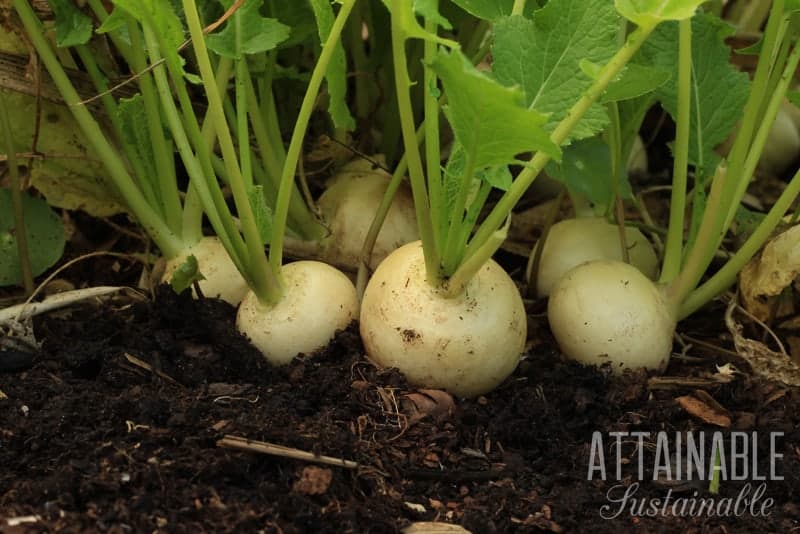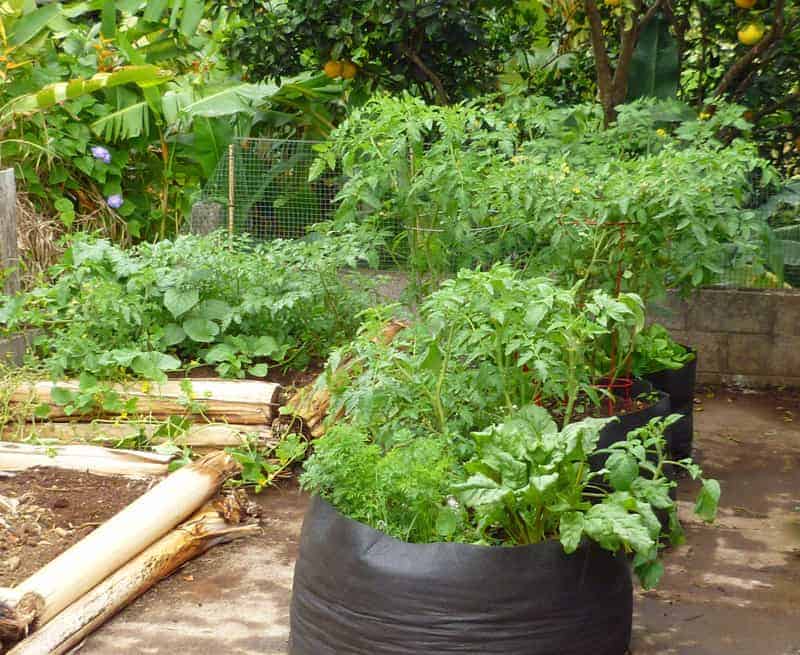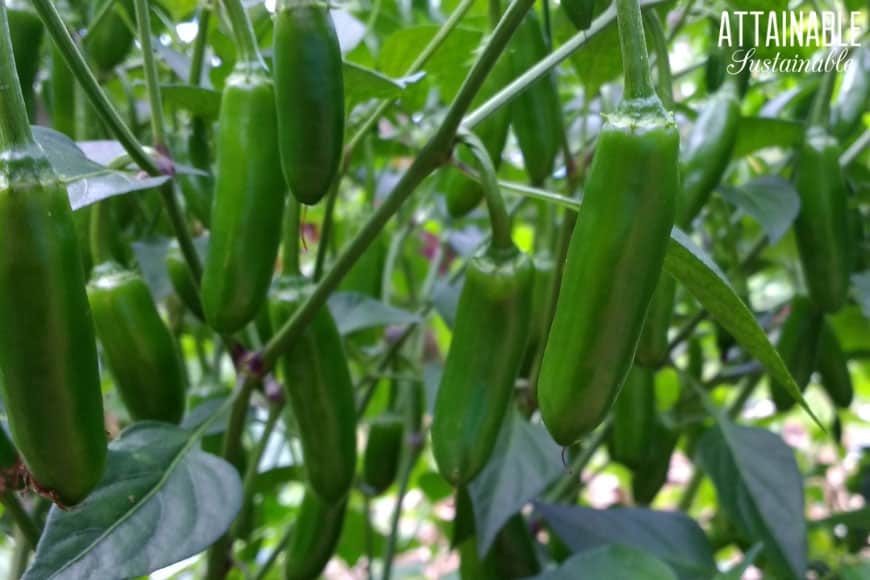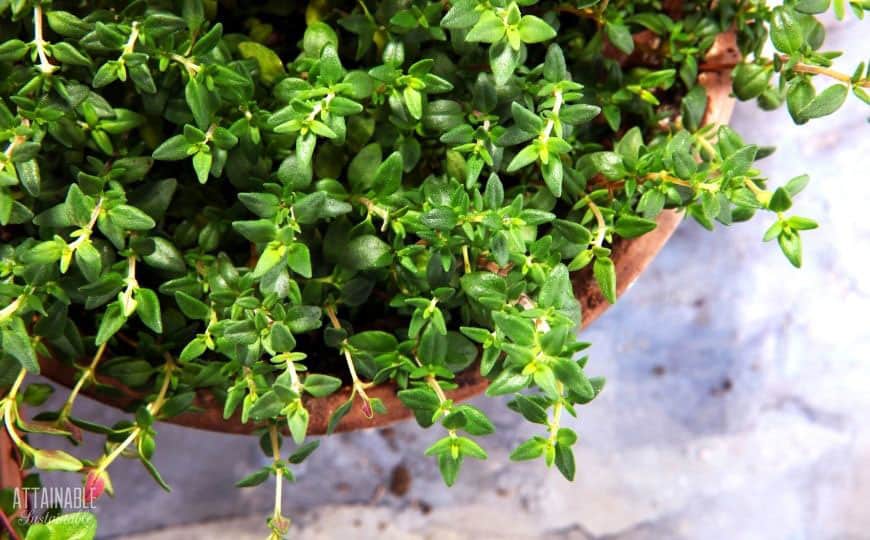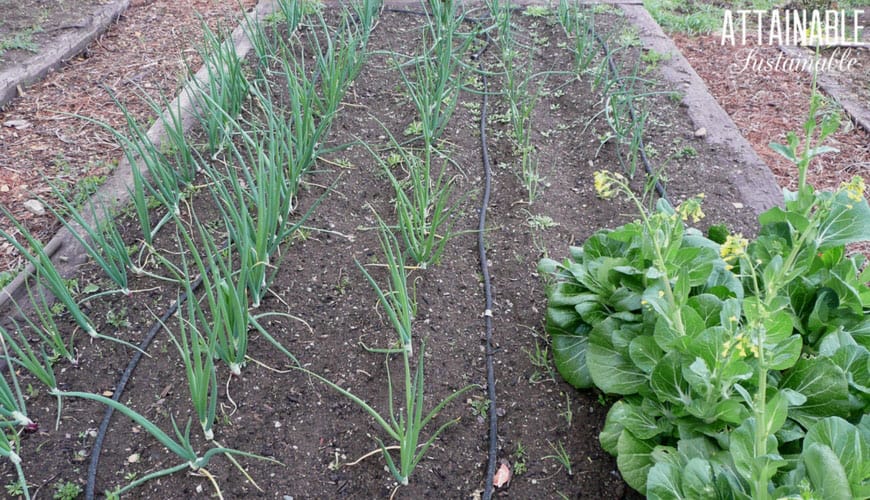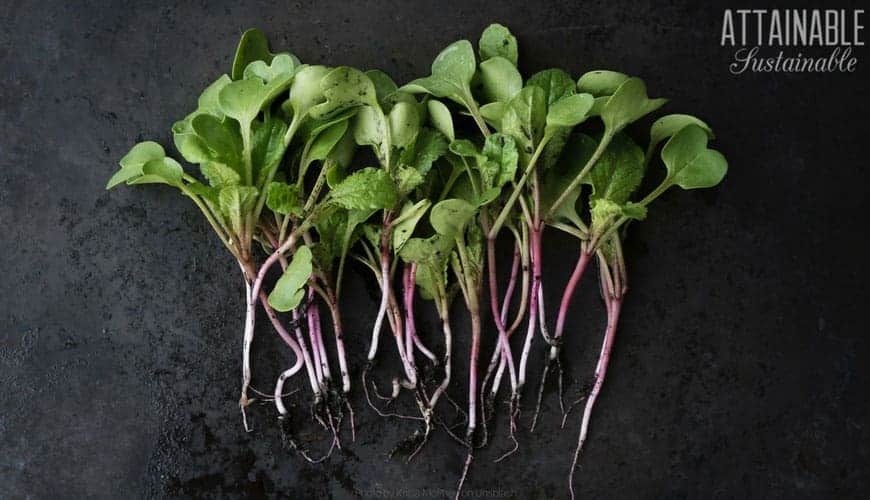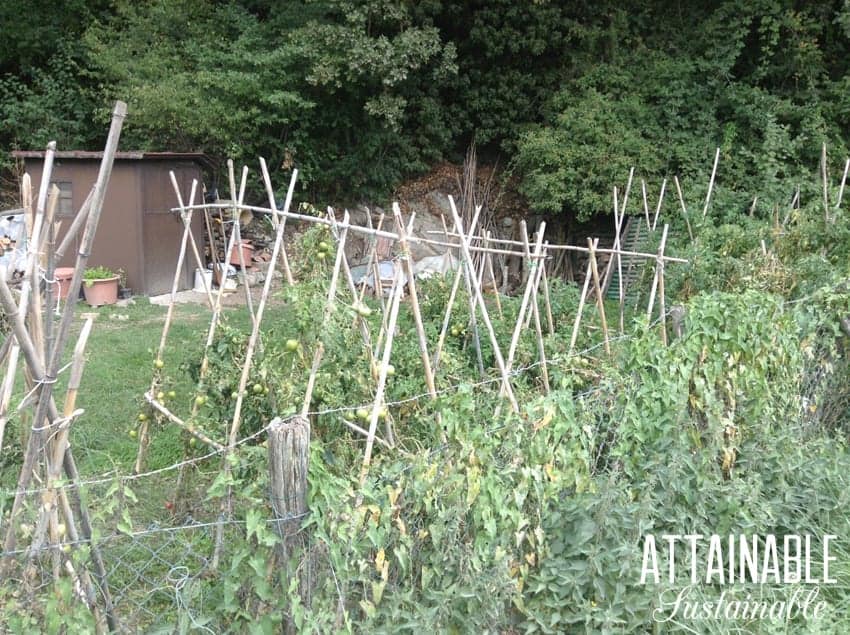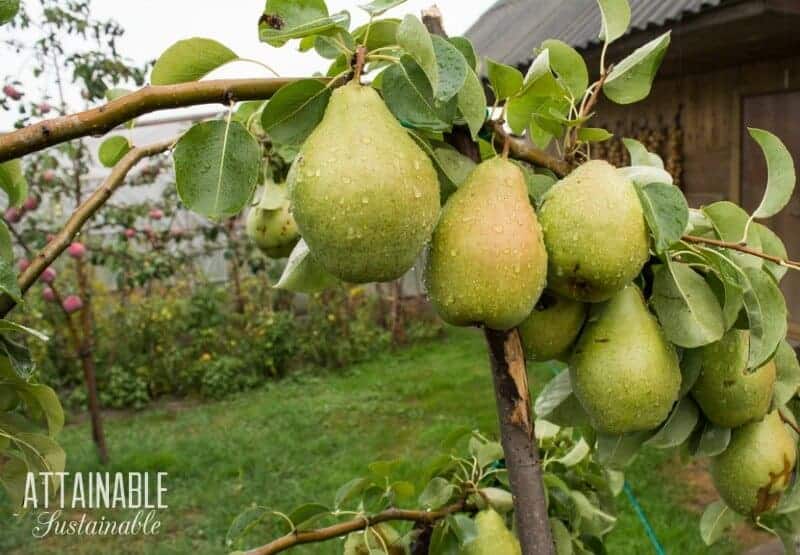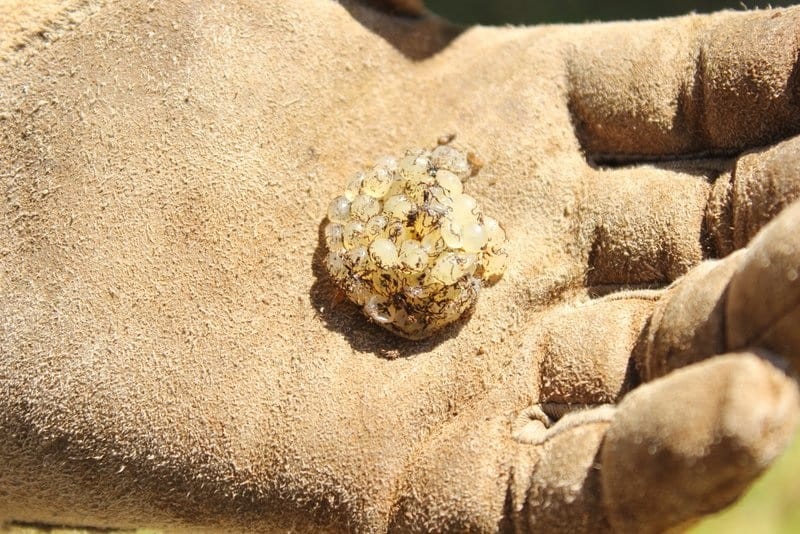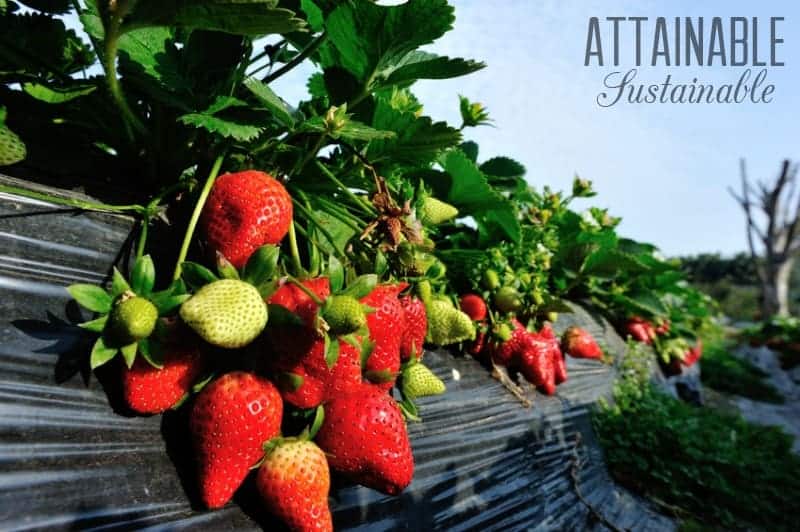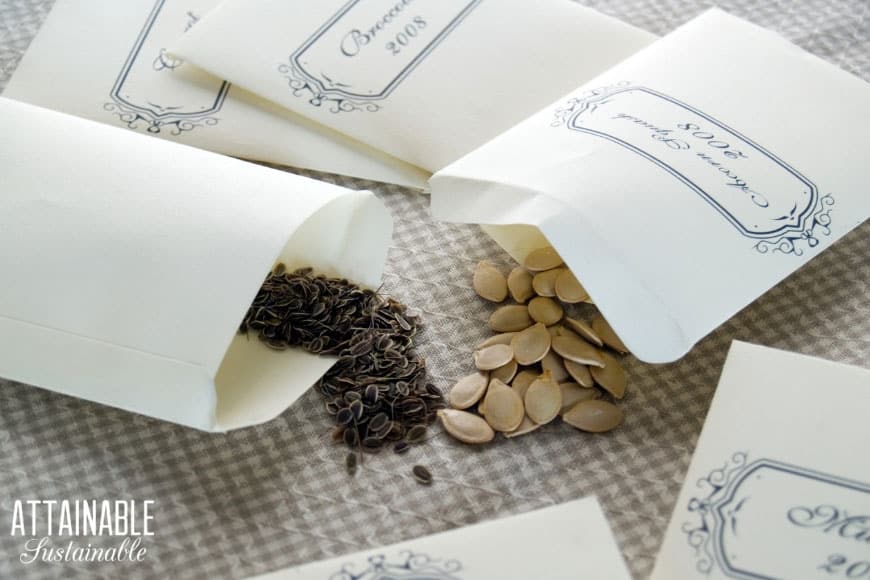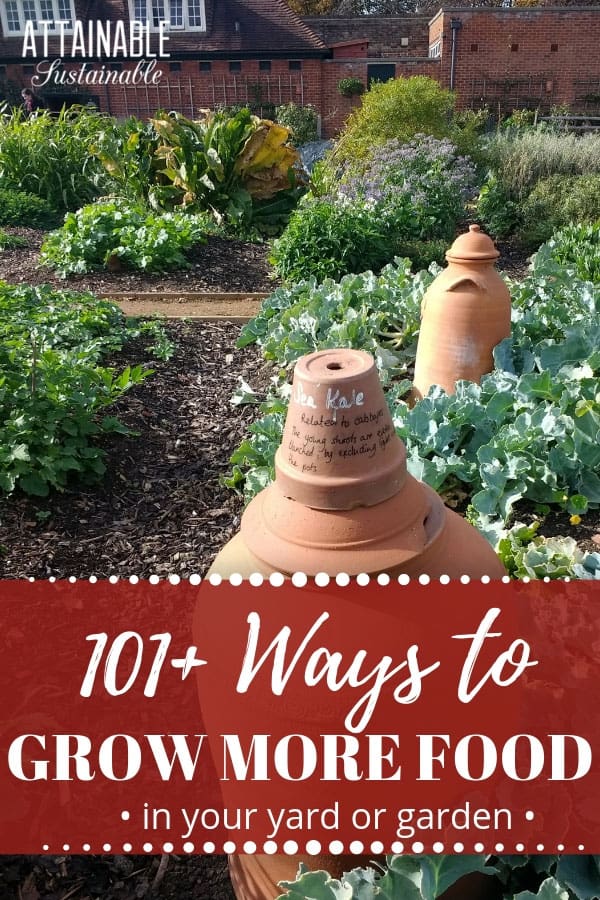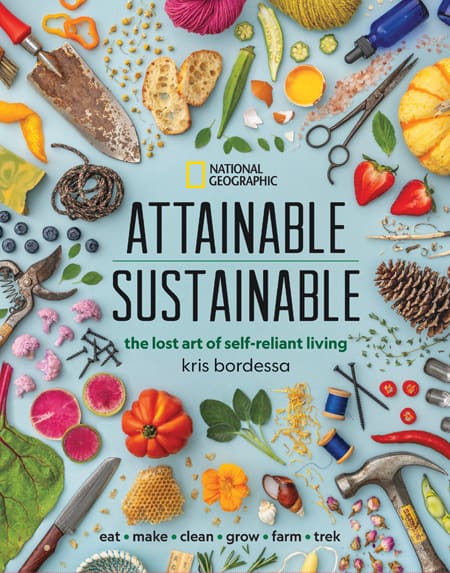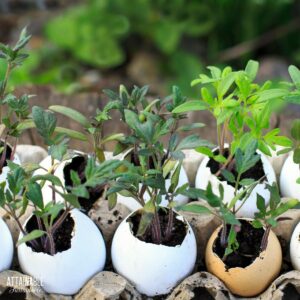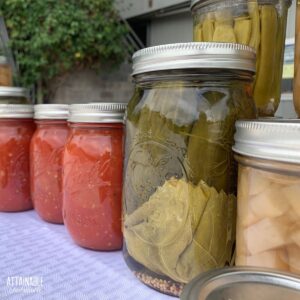Starting a garden is a great big step toward a more self-reliant lifestyle. There’s nothing more rewarding than planting food and watching it grow from seed to harvest. It’s such a joy to walk out to the vegetable garden for a snack or dinner ingredients. Starting a garden can also drastically reduce your grocery bill.
Growing fruits and vegetables in your backyard will give you greater peace of mind about the food you consume, too. After all, you’ll know exactly what goes into the produce you harvest from your garden.
Dreaming of starting a garden in your little corner of the world? Here’s what you need to know about planting food in your backyard. It’s not hard to grow a vegetable garden, but — especially for those who’ve never done it before — it can seem like a lot to learn. Yes and no.
At its most basic, growing food is simply a matter of sticking a seed in good soil, watering it, and watching it grow. There are a multitude of nuances, though. Many of those will depend upon your location and individual situation.
Here you’ll find a collection of articles that will help you learn more about planting a vegetable garden and growing your own food. It’s not a comprehensive list, and I’ll continue adding to it as time passes, but it’s a good starting place.
Starting a garden begins with building good soil
Vegetable plants need nutrients, and those come from the soil or the regular addition of fertilizer. While some growers use commercial fertilizer, that increases costs and is not always natural. Homemade compost is my preferred way to fertilize, and it’s essentially free.
Planting food crops that you intend to ingest means you’ll be especially concerned about what you put on your garden — synthetic fertilizers aren’t exactly something I want on my dinner plate!
- Garden soil: How to boost nutrients naturally
- Mulching for moisture retention and soil building
- Turn invasive weeds into free fertilizer
- Build a worm bin for less than $5
- Try trench composting
- Work smarter and compost in place
- Composting coffee grounds
- Create almost-instant compost in your blender
- Composting for the lazy person
- Making a lasagna bed garden
- The Art of Gardening is an in-depth primer on building your soil
- Garden store products you can make at home for less
- Composting for beginners
- How to Make Mulch: 12 Plants to Grow for Chop and Drop Mulch
How to plant a garden
Of course there’s no single correct way to plant a garden, so you’ll want to explore the options. From starting a garden in less-than-ideal conditions to figuring out the best way to net a big harvest, there’s a solution to your particular garden situation.
- Growing vegetables from seeds: How to get a jump on your garden
- 13 Reasons to plant a vegetable garden in your yard
- Growing a vegetable garden from scratch
- How to start seeds: pre-sprouting & direct sowing
- Choosing the best crops for your space
- Maximize your space
- Permaculture methods for a backyard oasis
- Creating a drought tolerant garden
- Planting tomatoes for strong growth
- How much should you plant?
- Vegetables that grow in the shade
- Why (and How) to Soak Seeds
- 4 Things to Stop Recycling and Turn into a Garden Asset
- Growing a Kitchen Garden for Fresh Produce
- The Easiest Composting Method
- 4 Steps to Creating an Eco-Friendly Backyard Oasis
- Understanding What’s in Season When
Plant food crops for a bountiful harvest
What you choose to grow will likely differ from what your neighbor grows, but starting a garden and growing food is a winning situation no matter what you plant. Consider your challenges in planting food: Is your space small? Climate dry? Time limited? You might find the solution here!
- Perennial plants that provide a harvest year after year
- Victory Gardens: 7 Reasons to Grow Your Own Food
- How to plant a garden full of calorie-dense foods
- Fast crops for a late-start garden
- Edible flowers for remarkable salads
- Growing grain in a small garden
- Quirky veggies to dazzle your garden
- Pretty edibles for front yard gardening
- 13 Reasons to grow food in your yard
- Annuals vs. Perennials: Making the Most of the Space you Have
- How to Make Rooting Hormone from Willow
- 20 Suppliers of Organic, Heirloom, and Non-GMO Seeds
Vegetables to consider when starting a garden
There are so many vegetables (and fruits!) to consider when you start thinking about planting food crops. Start with your favorites! If tomatoes are a favorite, there’s nothing as satisfying as standing in the middle of your garden, snacking on fresh cherry tomatoes. Planting food crops that you love means you’ll find great value in starting a garden.
The next thing to consider: what vegetables do you find yourself buying a lot of? If you use a lot of peppers in your cooking, you can save a bundle by growing your own. Ditto tomatoes and zucchini. Skip planting vegetable crops that you simply don’t use much.
- Heat Tolerant Vegetables that Thrive in Blazing Summertime Weather
- Growing Tomatillos in Your Summer Garden
- (Almost) fail-proof crops for beginners
- Growing Swiss chard
- How to grow peppers
- Planting yacon for a low-effort harvest
- Growing Cucumbers for Pickling and Fresh Eating
- Everything You’ve Ever Wanted to Know about Growing Tomatoes
- How to grow sweet potatoes
- Growing carrots like grandpa
- Cool weather crops to grow into winter
- Growing Turnips
- How to Grow Kale
- Brassica Vegetables to Consider
- Growing Roma Tomatoes for Cooking and Home Canning
- How to Grow Potatoes in the Home Garden
- How to Grow Bananas in Your Backyard
- Growing celery in the home garden
- How to grow pineapple in a container
- Grow a prolific crop of green beans
- How to Grow Rhubarb
- How to Grow Eggplant
- Growing Sweet Corn
- Growing Beets in the Home Garden
- How to Grow Artichokes for a Perennial Harvest
- How to Grow Okra
- Growing Asparagus in the Home Garden
- Growing Pumpkins
- How to Grow Cabbage at Home
- Plant Bok Choy for a Stir Fry Garden
- How to Grow Broccoli
- Grow Beautiful Onions
- Growing Cauliflower
- How to Grow Arugula
- Growing Brussels Sprouts for Fun & Flavor
- Growing Spinach
- Growing Shishito Pepper Plants
- Grow Radishes for a Quick and Easy Harvest
- How to Grow Kohlrabi
- Growing Lettuce
- Growing Leeks for a Flavorful Harvest
- Growing Green Onions
- How to Grow Collards
- Growing Parsnips
- How to Grow Shallots
- 25+ Purple Vegetables to Grow
- Growing Banana Peppers
Growing herbs for culinary flavor
- Growing Herbs (and Why You’d Want to)
- How to grow thyme
- Easy Herbs to Grow for Culinary and Medicinal Use
- Growing lemongrass
- How to grow turmeric
- Growing and harvesting basil
- Stevia for natural sweetening
- How to grow oregano
- How to grow lavender
- Growing garlic for pungent flavor
- How to propagate basil
- Growing Fresh Dill
- Propagating Rosemary
- How to Grow Parsley
- Growing Mint
- How to Harvest Basil Seeds
- How to Grow Fennel
- Growing Cilantro
Small space gardening
We don’t all have a large yard (or acreage!) in which to grow food. Making the most of the space we DO have is critical.
- How to grow a fig in a container
- Growing miniature fruit trees in pots
- Growing a container garden
- Getting the most out of your small space
- Creating food islands for intensive production
- Instant raised beds with grow bags
- Grow 17 plants in one square foot
- How to grow blueberries in containers
- Planting tomatoes in containers
- Growing Lettuce in Containers to Deter Pests
Indoor gardening
If you’re limited on space or facing winter, consider growing some of your own food indoors.
- Growing lettuce indoors
- Popcorn microgreens
- Growing windowsill herbs
- Fast growing microgreens for winter salads
- Bean sprouts – winter greens for pennies
- Sweet potato leaves for early greens
- How to Grow Your Own Organic Broccoli Sprouts
- Sprouting Lentils
- Hydroponics 101: An Introduction to Growing Food Without Soil
- Growing sunflower sprouts
- Easy Upcycled Seed Starting Pots
Vertical gardening: Planting food in small space gardens
If you’re starting a garden in a tight spot, growing UP means you’ll need less surface space to produce a harvest. Vertical gardening can encompass a number of different methods for utilizing the vertical space in your yard.
Vining plants like cucumbers and peas are a natural for vertical gardening — they want to climb upwards — but there are methods for growing just about any vegetable crop vertically. Hanging baskets, salad towers, and espaliered fruit trees are all ways of planting food for an abundant harvest no matter the size of your garden.
- Inexpensive trellis ideas for vertical gardening
- Grow a salad tower
- Build a bamboo trellis
- Upside-down tomatoes
- Growing Lettuce in Hanging Baskets
Growing fruit
Planting food crops doesn’t have to be limited to a seasonal vegetable garden. Expand your options and try growing some of your own fruit in the backyard. Fruit trees have a lot to offer besides a crop of apples or peaches, though. They can be the focal point of your landscape, they provide shade, and the birds will appreciate the habitat. The best part? Fruit trees in a home orchard will produce a crop every year without fail — and with very little maintenance.
- Five reasons to grow a crabapple
- Grow a nectarine tree from seed
- Perennials to encourage pollinators
- Bare root trees for your home orchard
- 10 fruit trees for edible landscaping
- Blueberries for a small garden fruit harvest
- Growing apple trees in the backyard garden
- How to grow a fig in a container
- Growing persimmons: The best varieties for a picky palate
- How to grow a banana tree
- Growing Apples (and Recipes to Use Them)
- 10 Types of Berries to Grow (and How to Use Them)
- Growing Watermelon
- Growing Currant Bushes
- Growing Goji Berries
- How to Grow Strawberries
- Growing Raspberries for a Delicious Harvest
- Consider Gooseberries for Your Garden
- Growing Grapes for Fresh Eating and Juice
- Growing Honeyberries, aka Haskap Berry
Natural pest control
Pests can be a problem when planting food crops, but try to avoid resorting to harsh poisons. You don’t want that on your food.
- Combating pests and disease in the garden naturally
- Organic pest control methods
- Controlling Japanese beetles in the garden
- Growing buckwheat for a healthier garden
- Controlling aphids naturally
- Critter proofing raised beds
- Planting for disease resistance
- Natural slug and snail control
- Controlling cabbage moths
- Eliminating fruit flies in compost
- Growing Lettuce in Containers to Outsmart Slugs
- Encouraging Beneficial Insects
- Preventing Powdery Mildew
- Fail-Proof Method for Keeping Cats Out of the Garden
- Recognizing and Eliminating the Tomato Hornworm
Harvesting your crops and saving seeds
Saving seeds from year to year and extending your harvests will save money in the long run.
- How to harvest basil all season long
- Extend your lettuce crop with this harvesting technique
- Seed saving for food security
- Six Reasons to Grow Heirloom Seeds
- Saving Tomato Seeds
- How to Harvest Spinach
Maintaining your garden with less work
Starting a garden is step one. Once you have it planted, you’ll need to care for the seedlings, protecting them from pest damage, keeping the weeds at bay, that sort of thing. Check out these gardening hacks and ideas for making the most of your gardening efforts.
- Natural weed killers
- Encouraging Mason bees for pollination
- Using eggshells in the garden
- Gardening hacks to save time and money
- Herbs: companion planting for a robust garden
- Growing perennial peanut grass
- Diatomaceous earth for pest control
- Using fall leaves in the garden
- Know what’s in your water to prevent damage
- Eat the weeds
- Winter garden projects to tackle in the off-season
- 15+ Cheap and easy DIY garden markers
- Fall clean up: Chores to tackle before winter sets in
- How to make an outdoor shower
- 7 reasons to spend more time working in the garden
- Consider community tool sharing
- Watering vegetables for best results
- Natural mosquito control for the garden
Growing flowers for beauty and pollination
- Growing milkweed for monarch butterflies
- How to Grow Lavender
- Plant Penstemon: An Invite to Pollinators

